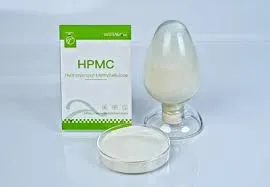
សីហា . 21, 2024 02:11 Back to list
Exploring the Properties of HPMC and Its Applications in Various Industries
Understanding HPMC Properties A Comprehensive Overview
Hydroxypropyl methylcellulose (HPMC) is a versatile cellulose ether widely used in various industries, including pharmaceuticals, food, and construction. Its unique properties make it a popular choice for many applications, including as a thickener, binder, film-former, and stabilizer. This article delves into the essential properties of HPMC that contribute to its functionality and effectiveness in different fields.
1. Chemical Composition and Structure
HPMC is derived from natural cellulose through a series of chemical processes. The introduction of hydroxypropyl and methyl groups to the cellulose backbone alters its solubility, viscosity, and thermal behavior. The degree of substitution—referring to the extent to which hydroxyl groups in cellulose are replaced—plays a crucial role in determining the properties of HPMC. By modifying these parameters, manufacturers can tailor HPMC for specific applications.
2. Solubility
One of HPMC's most significant properties is its solubility in cold water. Unlike many other cellulose derivatives, HPMC can dissolve readily in water without requiring heat. This characteristic is particularly valuable in pharmaceuticals for creating stable and uniform dispersions and in food products, where it enhances texture and consistency. The hydroxypropyl groups create a hydrophilic environment that improves water affinity, making HPMC particularly useful in applications requiring controlled release, such as in drug delivery systems.
3. Viscosity
.
HPMC exhibits excellent thickening properties, with its viscosity being adjustable through the degree of substitution and concentration. The viscosity of HPMC solutions can range widely, providing flexibility for various formulations. In the food industry, for instance, it can thicken sauces and dressings, lending desirable mouthfeel and texture. In pharmaceuticals, it helps in formulating suspensions and gels, ensuring proper dosage and stability. The ability to create solutions with predefined viscosity enhances the formulation’s performance, making HPMC an invaluable ingredient.
hpmc properties

4. Film-Forming Ability
Another remarkable property of HPMC is its ability to form films. When dried, HPMC solutions create a flexible, semi-permeable film, making it useful in coatings for tablets and capsules. This film-forming property is crucial in controlling the release of active pharmaceutical ingredients, allowing for sustained or delayed release formulations. Additionally, in the construction industry, HPMC is often added to mortar and concrete to improve adhesion and workability.
5. Stability
HPMC is chemically stable and resistant to degradation, which enhances its performance in various environments. It can withstand a broad range of pH levels, making it suitable for diverse applications, from acidic food products to neutral pharmaceutical formulations. Its molecular structure provides resistance to heat and other environmental factors, ensuring that products maintain their desired properties over time.
6. Biocompatibility and Safety
As a derivative of cellulose, HPMC is considered safe for use in food and pharmaceutical applications. Its biocompatibility makes it an excellent choice for drug formulations, particularly for those intended for sensitive populations such as children or the elderly. Regulatory bodies, including the FDA, recognize HPMC as a Generally Recognized as Safe (GRAS) substance, further validating its widespread use.
Conclusion
In summary, the properties of hydroxypropyl methylcellulose make it a multifunctional excipient in various industries. Its solubility, viscosity, film-forming capabilities, and stability, combined with its safety profile, establish HPMC as a cornerstone in formulation science. As industries continue to seek more efficient and effective ingredients, HPMC will remain a critical component in advancing product technology, meeting the growing demands for quality and performance across diverse applications.
-
Unlocking the Benefits of HPMC Products: A Gateway to Versatile Applications
NewsAug.07,2025
-
Unleashing the Potential of HPMC Ashland: A Comprehensive Look
NewsAug.07,2025
-
Tile Bonding Cellulose: The Key to Superior Adhesion and Durability
NewsAug.07,2025
-
Hydroxypropyl Methylcellulose Powder: The Versatile Component in Modern Pharmaceuticals
NewsAug.07,2025
-
Hydroxyethyl Cellulose: The Versatile Solution for Various Industries
NewsAug.07,2025
-
Hydroxyethyl Cellulose (HEC): The Versatile Polymer for Various Applications
NewsAug.07,2025







